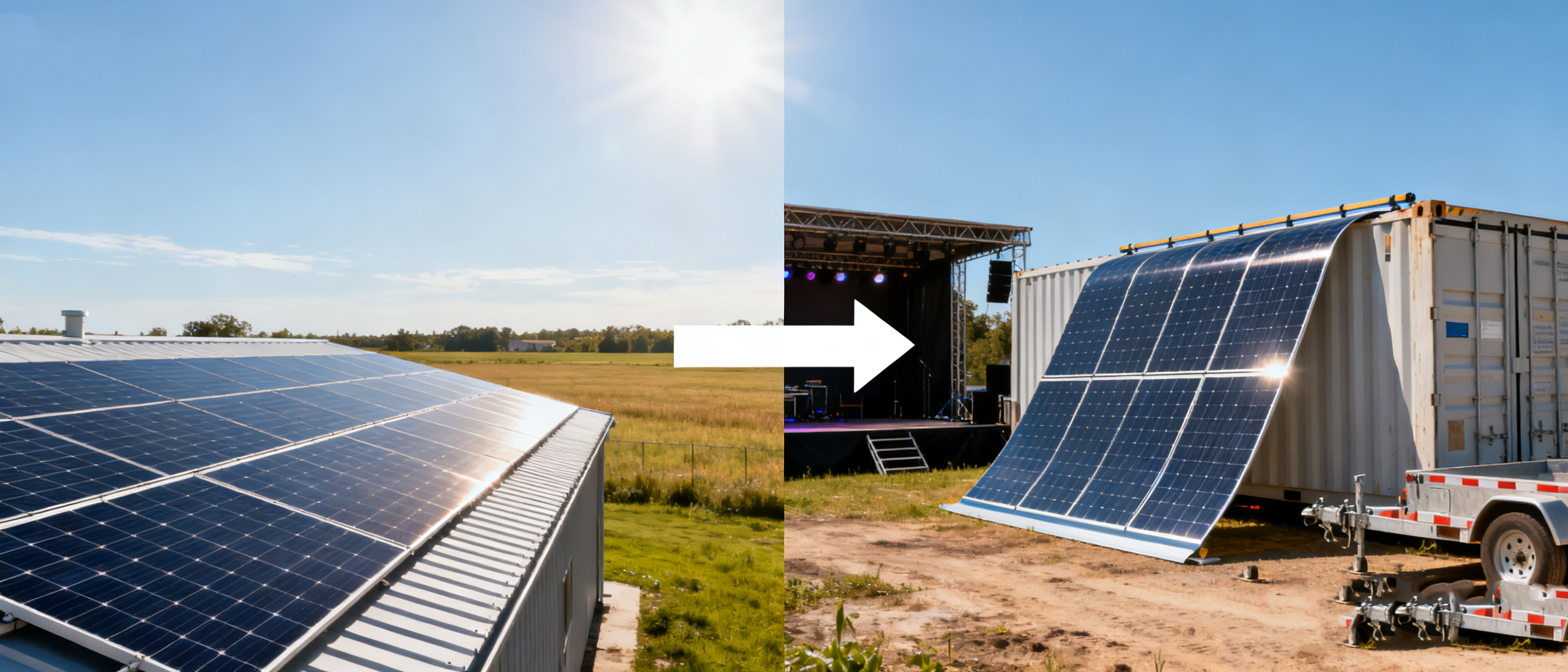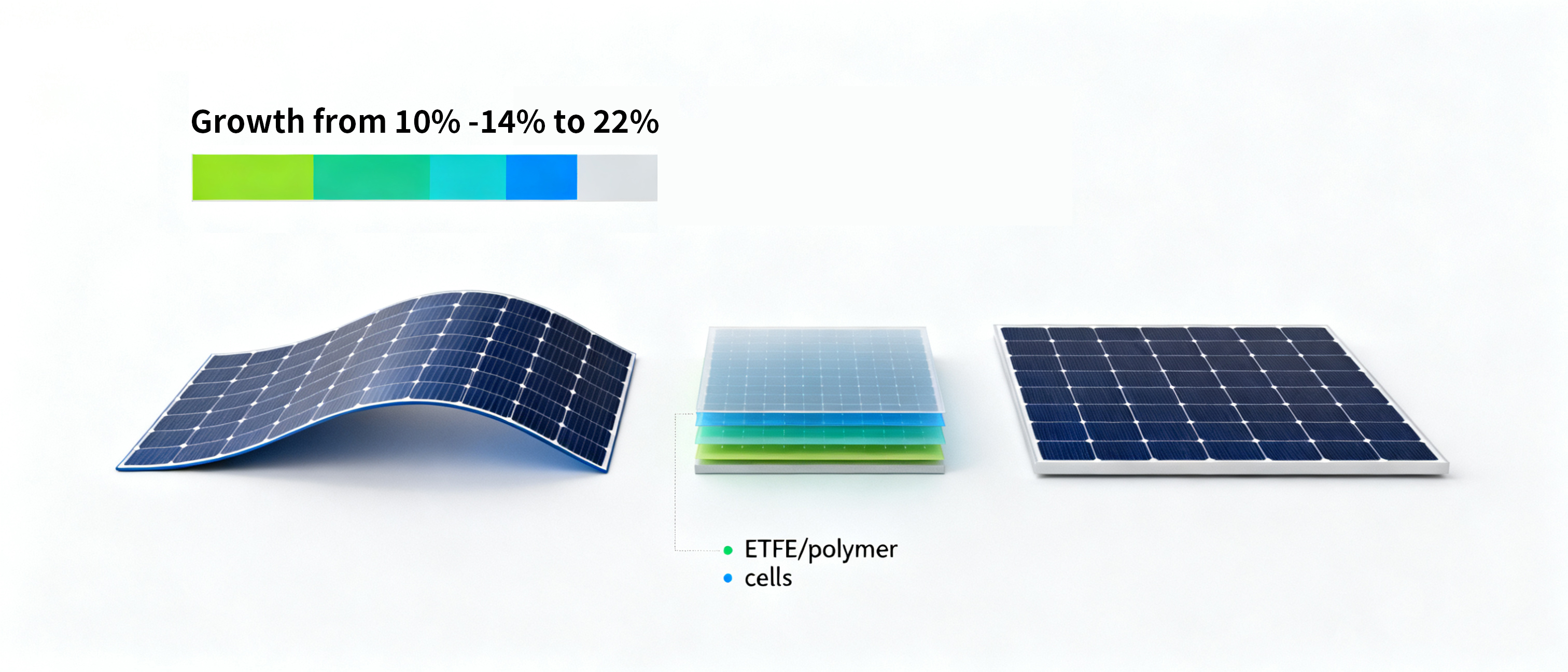Flexible Solar solutions: A New Era for Industrial Power
Posted by SLD Tech Inc on 3rd Sep 2025
In the fast-moving solar market, flexibility is no longer just a nice-to-have — it’s becoming a competitive advantage. As businesses adapt to new operational needs, flexible solar technology is stepping into the spotlight, offering installation freedom, portability, and efficiency that rigid panels simply can’t match.
A Shift in Commercial Solar Needs
Traditional solar has always worked best on predictable, flat, or pitched rooftops and open fields. But 2025’s commercial energy landscape is more diverse. Businesses now want solar solutions that can move with them, adapt to irregular surfaces, and integrate into unconventional environments.
Consider industries like marine transport, outdoor events, and mobile construction sites. These sectors often operate in locations where fixed infrastructure is impractical, but the need for reliable, clean power is urgent. Flexible solar fills this gap by making high-efficiency generation possible anywhere sunlight is available — even on curved surfaces or temporary structures.

How Flexible Solar Works
Flexible solar panels use thin-film or specialized monocrystalline cells encapsulated in lightweight, durable polymers like ETFE. Unlike their glass-covered rigid counterparts, these panels can bend slightly, conforming to the surface they’re mounted on.
Early flexible panels traded efficiency for mobility, often operating at 10–14% efficiency compared to rigid panels’ 18–20%. But recent breakthroughs have closed the gap significantly. Today, top-tier flexible modules can achieve over 22% efficiency, rivaling high-end rigid systems while retaining their portability and low weight.

The B2B Advantages of Flexible Solar
1. Installation Versatility
From yacht decks to RV rooftops to curved warehouse structures, flexible panels can be bonded, sewn, or adhered directly to a variety of surfaces without heavy racking systems.
2. Reduced Structural Load
Weighing a fraction of traditional panels, flexible PV reduces stress on older roofs and portable structures, extending installation possibilities without costly reinforcement.
3. Speed of Deployment
For industries that need rapid setup — such as disaster relief or mobile events — flexible panels can be installed and activated in hours rather than days.
4. Enhanced Durability
Modern encapsulation materials resist saltwater corrosion, UV degradation, and impact damage, making them ideal for demanding environments.
Real-World Applications
-
Marine Power Systems: Cruise lines and cargo ships are using flexible solar to offset fuel costs during daylight cruising.
-
Construction Sites: Mobile site offices and tool charging stations powered by PV reduce generator use and fuel dependency.
-
Events and Entertainment: Music festivals and sporting events are deploying flexible solar for silent, emission-free stage and lighting power.
-
Emergency Response: In disaster zones, flexible panels can be air-dropped with other supplies and deployed instantly.
Technology Broadcast: Efficiency and Reliability
The last two years have been particularly exciting for flexible PV technology.
-
Efficiency has jumped from ~18% to over 22% in top models.
-
New backing materials improve mechanical resilience without adding weight.
-
Integrated microinverters allow direct AC output, simplifying setup.
For commercial buyers, this means flexible PV is no longer just for niche hobbyists — it’s a viable, bankable technology for large-scale, mission-critical projects.
SLD Tech’s Position in Flexible Solar
SLD Tech has invested heavily in refining its 200W flexible solar panel, designed for marine, RV, and portable commercial applications. Built with corrosion-resistant materials and certified for industrial-grade safety standards, our flexible modules deliver consistent performance even in challenging conditions.
For business buyers, this isn’t just about a product — it’s about having a partner who understands deployment challenges and can offer tailored solutions, from stand-alone PV to integrated PV+storage systems.
Conclusion
The future of solar is not only about higher efficiency and lower costs — it’s about adaptability. Flexible solar panels represent a fundamental shift in how and where businesses can harness clean energy. For companies looking to stand out in 2025, embracing flexibility — both in mindset and in technology — could be the competitive edge that drives the next decade of growth.

